
African Americans in Oklahoma Before 1954
Lawyers
J. Coody Johnson
In the chaos of the Civil War in Indian Territory in 1864, J. Coody Johnson was born to refugees at Fort Gibson. A citizen of the Muscogee Nation, Johnson attended school in Wewoka, and the Seminole Nation sponsored his college degree at Lincoln University in Pennsylvania. He then returned to Indian Territory and worked as a cowboy. Judge Isaac Parker, charged with handling cases in Indian Territory, needed interpreters and hired Johnson. Johnson began studying for a law degree under the judge, and served in both the Muscogee and Seminole governments at the highest levels. He was nicknamed “The Black Panther.”
As statehood became a reality and the demands increased for strict segregation, J. Coody Johnson organized with other Freedmen and Black Oklahomans to fight this attempt. He organized and led the Negro Protective League and was one of a small delegation of Black Oklahomans that met with President Theodore Roosevelt in an effort to defeat the proposed state constitution. Later, he helped spearhead the fight against the grandfather clause.
Johnson found success not only in law but in oil and real estate as well. He owned a huge ranch in Muskogee where he held the first Black State Fair in Oklahoma. Johnson donated a significant amount of his estate and acreage to provide for a school for Black children, resulting in the Johnson Grove School.
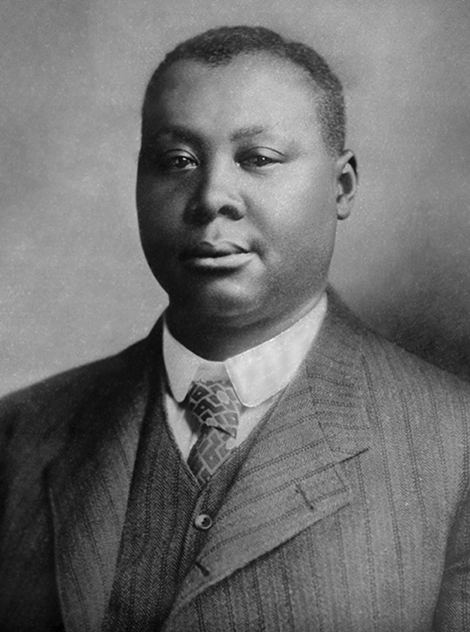
J. Coody Johnson held important positions within two tribal governments and within the Black community (1135, J. Coody Johnson Collection, OHS).
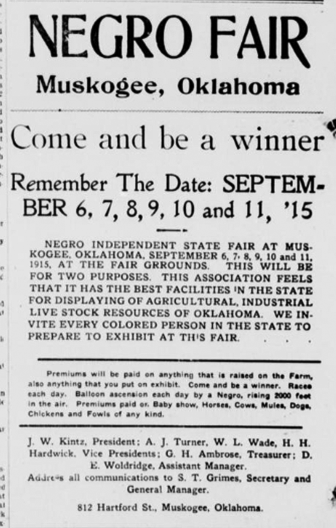
The Tulsa Star advertised the fair Johnson held on March 13, 1915. Black schoolchildren across the state received two days off school to attend.
B. C. Franklin
Born in 1879 in the Chickasaw Nation, Indian Territory, to a Freedmen family, Buck Colbert Franklin attended several schools pursuing his education. While teaching and farming, B. C. Franklin studied the law by correspondence through the Sprague School of Law in Detroit. Franklin passed the bar exam with ease, scoring second-highest among those taking the exam. He practiced law in the All-Black town of Rentiesville before moving to Tulsa in 1921. Within months, the Tulsa Race Massacre occurred, causing B. C. Franklin to be held by authorities for several days. Immediately upon release, Franklin began organizing survivors of the massacre. He filed suit against the city for their plans to institute a fire ordinance that would prevent almost all the residents of the Black neighborhood of Greenwood from rebuilding on their property. B. C. Franklin also wrote an important eyewitness account of the events of the massacre and an autobiography. He died in 1960.
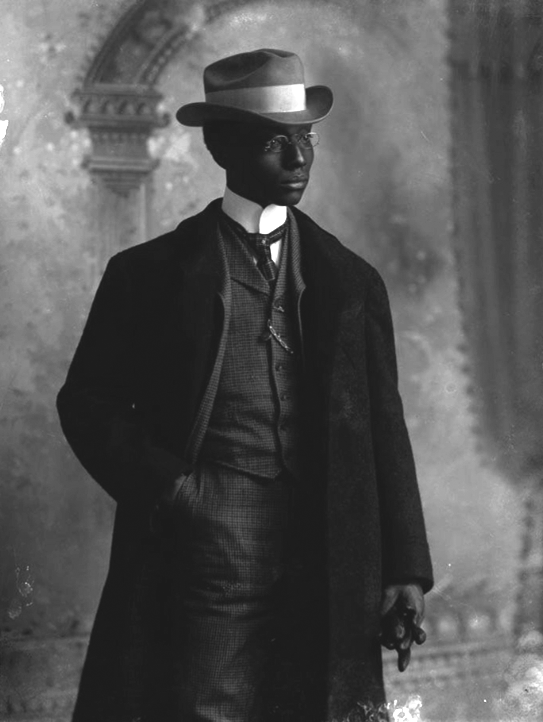
Buck Colbert Franklin, 1901 (image courtesy Tennessee Virtual Archive).
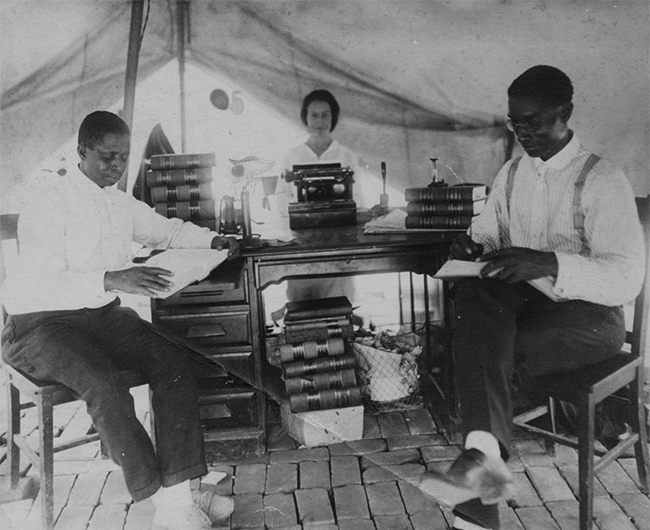
B. C. Franklin, right, with his law partner, I. W. Spears, left, and secretary Effie Thompson, center, working in a tent days after the Tulsa Race Massacre (image courtesy the National Museum for African American History and Culture).
Amos T. Hall
Amos T. Hall was born in 1896 in Louisiana. He attended Rust College in Mississippi and Gilbert Industrial College in Louisiana. He moved to Tulsa in 1921 and began studying law books he found in a church. Completely self-taught, Hall passed the bar exam in 1925. He worked with B. C. Franklin in a case concerning whether coerced confessions were constitutional, and they were successful in getting their client’s conviction reversed. As that case came to a conclusion, he served as the lawyer for Emma Lee Freemen, who sued the Oklahoma City School Board for equal pay for Black teachers and won. At the same time Hall worked on these cases, he also represented Ada Lois Sipuel in court with Thurgood Marshall. Hall then went on to represent George McLaurin in his case.
Amos T. Hall stands with Roscoe Dunjee and Clara Luper as major architects of the Civil Rights Movement in Oklahoma during the critical decades of the 1940s and 1950s. Precedents that Hall helped to establish would contribute to the overturning of the system of legal segregation that dominated much of the country for over half a century.
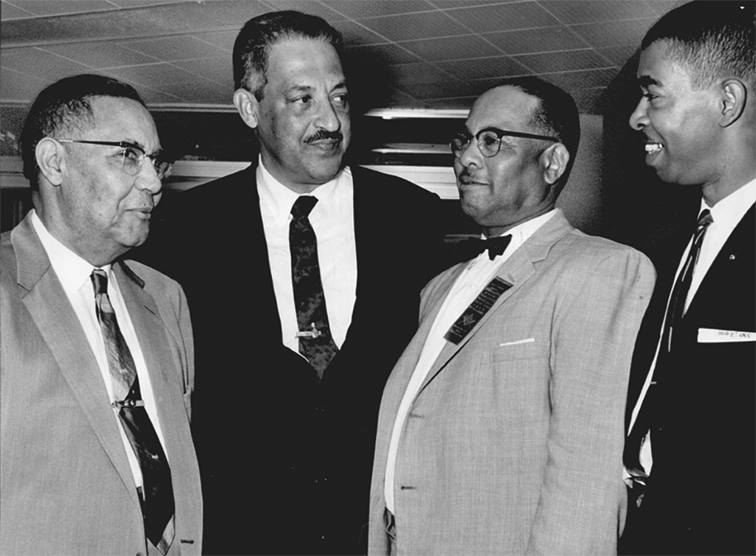
Amos T. Hall, left, with Thurgood Marshall, Ernest E. Byrd, and E. Melvin Porter, 1961. Photo by Dick Cobb (2012.201.B1219.0756, OPUBCO Collection, OHS).
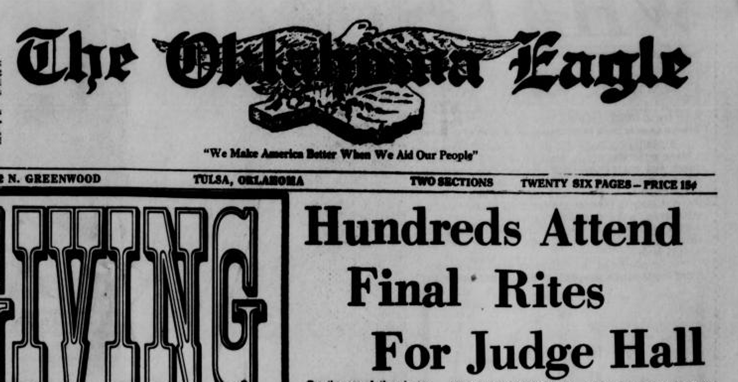
The Oklahoma Eagle reported the funeral of Amos T. Hall, November 25, 1971.
Doctors and Nurses
W. H. Slaughter
Born in 1872 in Alabama, W. H. Slaughter settled in Oklahoma after graduating from Meharry Medical College in Nashville. Dr. Slaughter was Oklahoma City’s first Black physician and served the African American community for five decades. He also invested in property and became the largest Black landowner in the city. He dedicated his free time to civic duty, including service in the Negro Chamber of Commerce, the Negro Business League, and Avery Chapel A. M. E. Church. Dr. Slaughter joined the local chapter of the NAACP, supporting their campaigns through the decades. He established the Oklahoma Medical, Dental, and Pharmaceutical Association for Black medical professionals in the 1920s. Dr. Slaughter worked to support the war efforts during World War II by coordinating a war bond campaign. His final years were spent spearheading the construction of a YMCA and YWCA building for the African American community.
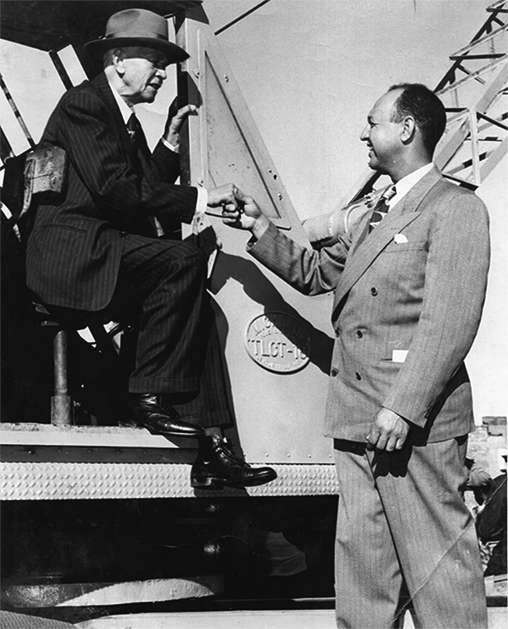
Dr. Slaughter with his son at the groundbreaking for a YMCA in 1950. Photograph by Bill Burns (23427.5, Finley-Slaughter Family Collection, OHS).
W. L. Haywood
Dr. W. L. Haywood was born in 1883 and was orphaned at age five. He graduated from Meharry Medical College in 1908. He came to Oklahoma when he fell ill on a train ride to California, and found Dr. W. H. Slaughter for treatment. During the visit, Dr. Slaughter convinced Dr. Haywood to settle in Oklahoma City. Dr. Haywood founded Utopia Hospital, the first hospital in the city for African Americans. Dr. Haywood helped establish the first Black Greek Letter organization in Oklahoma, Kappa Alpha Psi, in 1922. He was active in the NAACP and co-founded the Oklahoma Medical, Dental and Pharmaceutical Association. He was the first Black physician to work on the faculty of University Hospital in 1943. During his tenure, he oversaw the integration of departments ranging from cafeteria services to nursing. He ensured Black doctors had full privileges at the hospital.
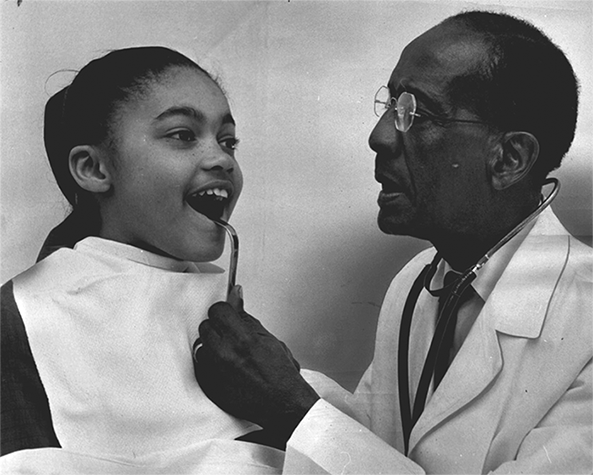
Dr. Haywood at work, 1960 (2012.201.B0285.0489, OPUBCO Collection, OHS).
Gravelly Finley
Gravelly E. Finley was born in Arkansas in 1908. He graduated from Meharry Medical College. In 1935, he married Dr. W. H. Slaughter’s daughter, and they moved to Oklahoma City in 1937, where he established a practice in the Deep Deuce neighborhood. Dr. Finley was the first physician on staff at St. Anthony’s Hospital. A dedicated member of Alpha Phi Alpha, Dr. Finley established a chapter of the organization in Oklahoma City in 1938. He supported the NAACP, the YMCA, Habitat for Humanity and the Medical, Dental and Pharmaceutical Association. In addition to the civic work he did in Oklahoma City, he also traveled to Africa and established a medical clinic in the Democratic Republic of the Congo.
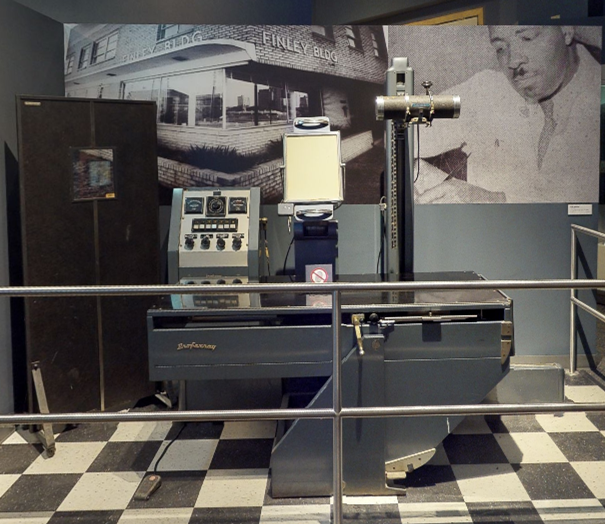
Dr. Finley’s X-ray machine can be seen at the Oklahoma History Center.
Opaline Wadkins
Born in 1912 in Texas, Opaline Deveraux Wadkins accepted a position in Oklahoma City to recruit more Black nurses. Upon her arrival, Wadkins began lobbying for better medical facilities for Black residents of Oklahoma City. The state decided to build a dedicated ward of University Hospital for Black patients. Dr. W. L. Haywood and Wadkins served as the liaison between the all-white staff of doctors and the all-Black staff of nurses. At the same time, she organized a training program at Douglass High School to train practical nurses. In the five-year period, from 1949 to 1953, Wadkins trained over 200 nurses in this program. She successfully fought to open the University of Oklahoma College of Nursing to Black students and was the first African American to receive a master's degree from that college. She accepted a position from the US Health Department focusing on improving maternal health and infant mortality in southwestern Oklahoma among tribal members. The programs she instituted reduced infant mortality by 50 percent. Wadkins developed programs that were hosted by African American churches focusing on diabetic and maternal health, and she capped her career by establishing the Langston School of Nursing. In 1976, Governor David Boren declared November 14 as “Opaline Wadkins Day.”
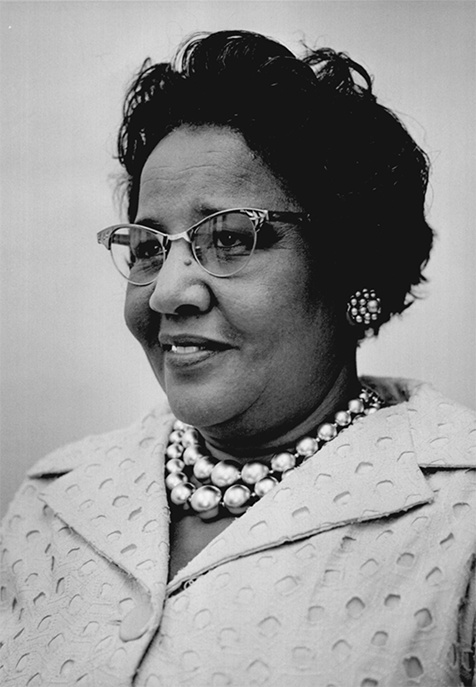
Opaline Wadkins, 1962 (2012.201.B1387.0559, OPUBCO Collection, OHS).

